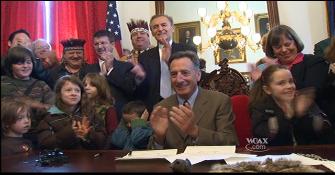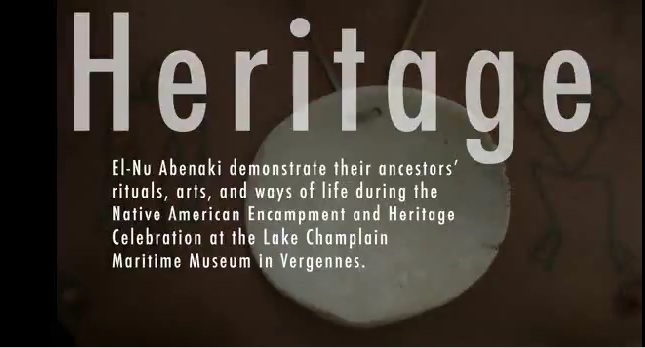In the News
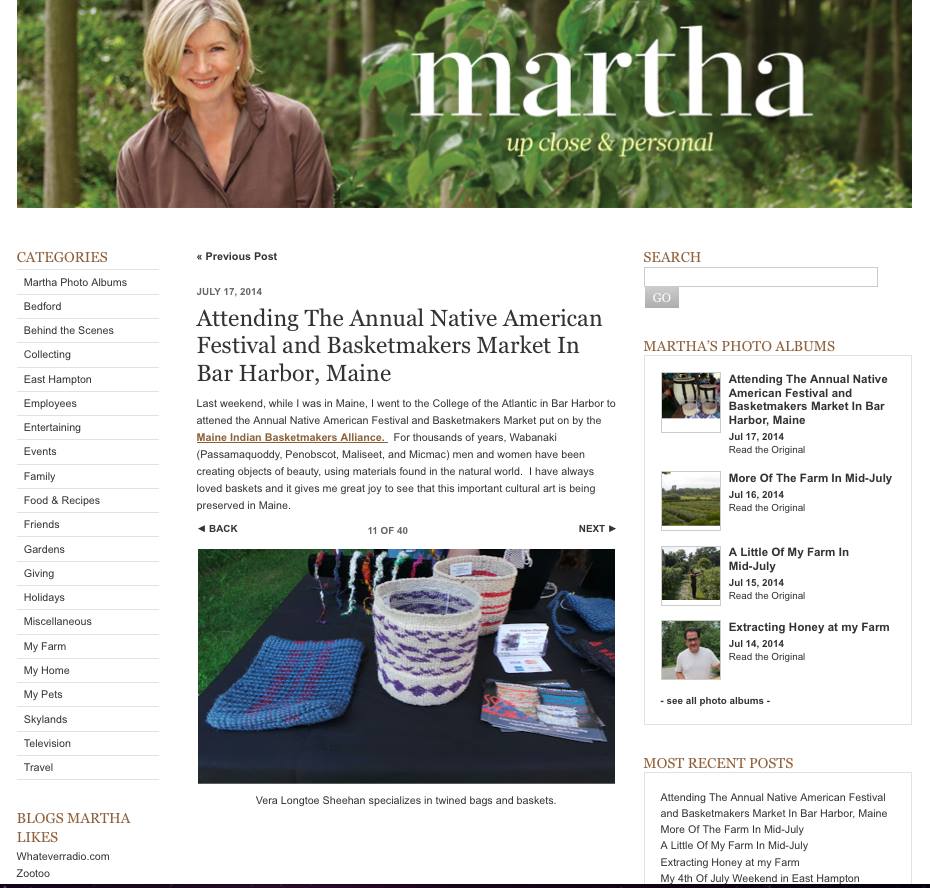
(Martha Up Close & Personal, 2014)
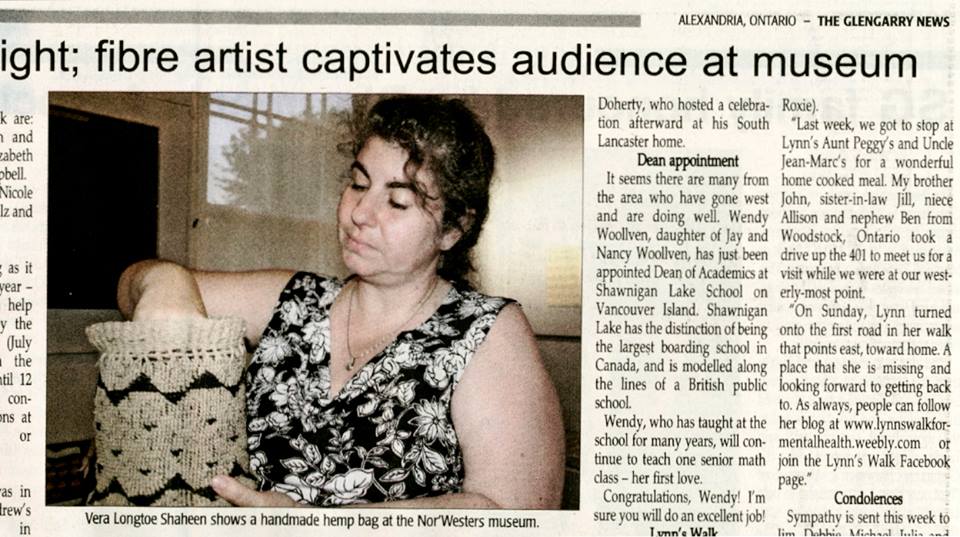

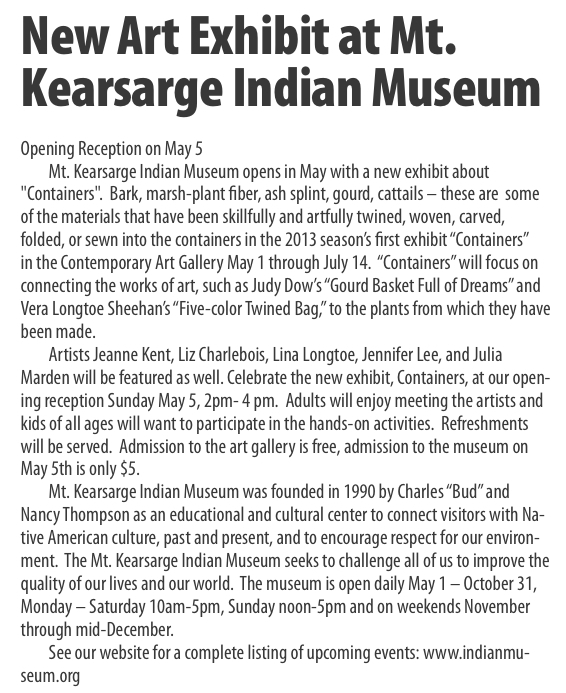
("New Art Exhibit at the Mt. Kearsage Indian Museum," 2013)
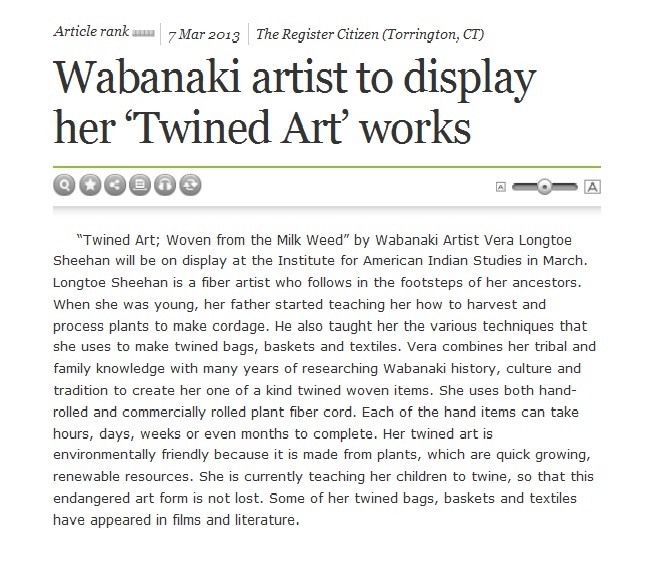
(Glengarry News, Ontario, Canada, 2013)
(The Register Citizen, Torrington, Ct, 2013)
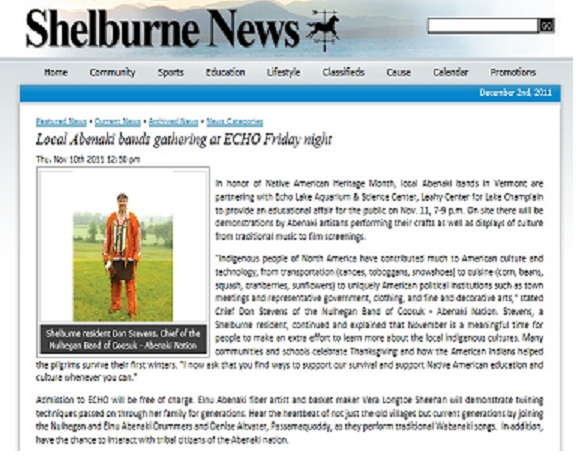
(Shelburne News, 2011)
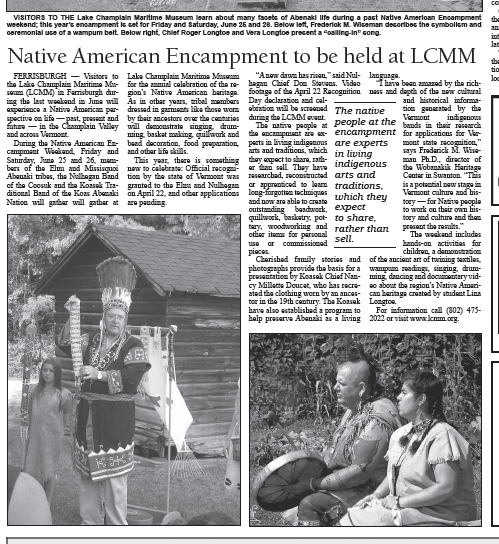
(Native American Encampment to be held at LCMM, 2011)
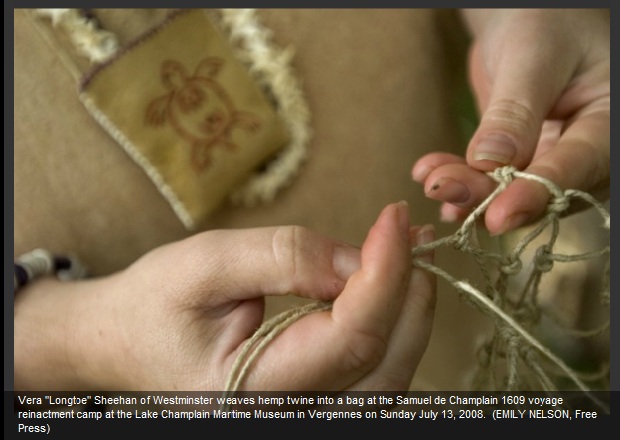
(Nelson, 2008)
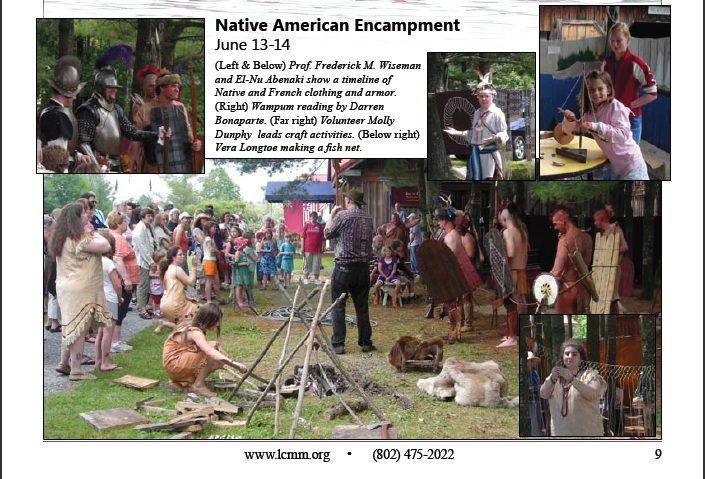
(Lake Champlain Maritime Museum, 2010)
E. Montpelier welcomes Abenaki Museum
By Kelly Janis
May 1, 2008
"For years, they've been fighting," said Cowasuck tribe member Todd Hebert, pointing to portraits of several Abenaki tribes, situated side-by-side on the walls of the Ndakinna Cultural Center. "They've been against each other. And now, here they are in the same room, facing each other."
Such unity was apparent as members of Native American bands from across the state converged in drum circles, singing and craft demonstrations to celebrate the grand opening of the Abenaki Indian Museum - dedicated to the preservation of native heritage by means of classes, workshops and exhibitions - on April 26 and 27 in East Montpelier, Vt.
"This museum was created for the people in honor of our Grand Mothers and Grand Fathers that walked on this beautiful Mother Earth before us," reads a sign in the Campbell Museum room, which showcases a wide array of Native American artifacts, including a dugout canoe, medicine bag, turtle rattle and soapstone pipe, examples of traditional regalia, jewelry and a selection of reading materials. "The spirits of our ancestors are here with us today. They are guiding us to teach now that it is okay to share some of our secrets and some of our past."
For the Abenakis - whose homeland extended throughout much of northern New England and the Canadian Maritimes - the past is, at many junctures, a painful entity with which to grapple.
In 1931, the passage of An Act for Human Betterment by Voluntary Sterilization as part of the eugenics movement in Vermont caused Indian identities to dart underground.
"During my grandfather's time, you could get hung from a tree," said Roger Longtoe Sheehan of the Elnu tribe, who spent Saturday afternoon selling handmade pipes, war clubs, tomahawks and arrows on the lawn outside of the museum. "Being Indian wasn't a thing you wanted to go telling too many people."
"If they found out you were Abenaki, you could get sterilized," Hebert said. "People came up missing. It was genocide. That's what it was."
Although conditions have improved considerably in the ensuing decades, the dynamics of the former half of the 20th century have left an indelible mark. This is evidenced most prominently in the false - but widely held - belief that the majority of the Abenaki people long ago fled to Canada.
"We're here now," Hebert said in protest. "Nobody left. This is us. This is who we are."
In May of 2006, Gov. Jim Douglas signed a bill recognizing the Abenakis' presence in Vermont.
"Basically, they said we exist," Sheehan said.
Nevertheless, flaws in the measure continue to prevent Native Americans from promoting their products as "Indian-made."
"I can sell my items as a descendant of the Abenaki," Sheehan explained. "I can't say I am an Abenaki and sell them that way."
As tribes campaign to rectify this caveat, they struggle against unfavorable representations in popular culture and the media.
"We're trying to get recognition just to be able to label our crafts as Indian-made," Hebert said. "And people tie it into casinos and land claims and all of this stuff constantly, every time."
Hebert indicated a cartoon which ran several years ago in The Burlington Free Press, depicting casino-laden squalor under the heading "Welcome to Abenaki Country."
"It puts a misconception about us out there, and it's used every time," Hebert said. "And all of a sudden the fear comes up."
The Abenakis of Vermont are striving to combat the fear by which they have been beleaguered in preceding centuries with the revitalization of their heritage.
"We're trying to rebuild our culture," said Whisper, an elder from the Northeast Kingdom. "We've got remnants of it, patches of it. And we're all trying to share it and bring it back into a cohesive whole."
Whisper described spiritual teachers as paramount to the preservation of this culture.
"When a people are being conquered, the first thing they lose are the medicine people, the elders, the people who know the old wisdom," she said. "It has to be a very quiet and low-key effort to recover the spiritual teachings that underlie the old ways, but are still applicable."
"A lot of culture was lost," said Roger Longtoe Sheehan's cousin, Vera Longtoe Sheehan. "So what we do have is important to share."
Vera Longtoe Sheehan has valued this process of sharing since an early age.
"I wanted to know more about my culture, and when I was very young, trying to know more, I had a hard time finding adults to mentor me," she said. "So I started delving into history books, and finding elders who knew information."
In turn, Sheehan imparted these relics upon her own family. Her 5-year-old son dances and sings Wabanki music at pow-wows, while her daughter experiments with finger-weaving and sewing.
"I like to focus on the young girls," she said. "They are going to be the mothers someday. A lot of cultures are passed on from mothers as they have their babies sitting on their lap."
This transmission of heritage also takes place on a public scale, in the form of the clothing, jewelry and baskets Sheehan produces, as well as the educational programs she leads at schools, museums and historic sites. Such programs often include what are known as living history villages.
"We come dressed in traditional clothing from a certain time period and set up an entire village," she explained. "We'll set up wigwams, lean-tos. We'll do traditional crafts, cook on the fire and show people what it would be like to live in the 17th century."
George Peskunck Larrabee offered similar experiential learning on Saturday as he led visitors in the construction of a wigwam, the dome-shaped shelter of choice for traditional Abenaki tribes.
According to Larrabee, such workshops do not always proceed as planned. As evidence, he recounted the precarious attempt of local high school students several years ago.
"They basically got everything wrong," Larrabee said, cringing as he described pieces inserted backwards and a plush poison ivy lining. "It looked nice, though."
This time around, Larrabee was equipped with plenty of competent aid. John Avery - a Williamstown, Vt. resident attired in a Harley Davidson t-shirt and maroon sweatpants and wielding a tomahawk - revealed himself to be surprisingly astute for a novice as he sorted pieces of wood in preparation for the project.
As it turns out, Avery was hardly a newcomer to the construction of Native American dwellings. Last year, a family friend decided she wanted a wigwam of her very own - a desire which some savvy online shopping translated into reality. As with many products, however, assembly was required. Thus, Avery and his adventurous compatriots were charged with gathering two dozen 32-feet long wooden poles into a coherent form.
"It took two days - the first time," Avery said. "It came down three times. Twice, the whole thing had to come down and we started all over, because the door has to be pointing east. It's a lot of work. It was quite a chore putting it up."
His perseverance at the task yielded fascinating lessons.
"I learned quite a lot about the symbols on wigwams," Avery said. "You shouldn't copy them. It's disrespectful. Each one of those symbols means something to the person who wrote it. It's his life. Each symbol is something that guy has done. Like, a sword means that he's killed so many animals or whatever."
As a consequence of his exposure to native culture, Avery is smitten with the image of what he believes would be a more desirable lifestyle than his own.
"It wouldn't even bother me to head out into the wilderness and live like these guys did," he said. "I'd love to get away from everything. Phone, TV."
Ultimately, however, a certain practical impediment to this impulse exists.
"My wife wouldn't go with me," Avery said, adopting the same tone of disappointment with which he lamented her unwillingness to sleep in a wigwam in the middle of winter with an open flame, for fear of dying of smoke inhalation. "She has to have running water and take showers." (Janis, 2008 )
Email Vera at vlongtoe@vtindigenous.com

